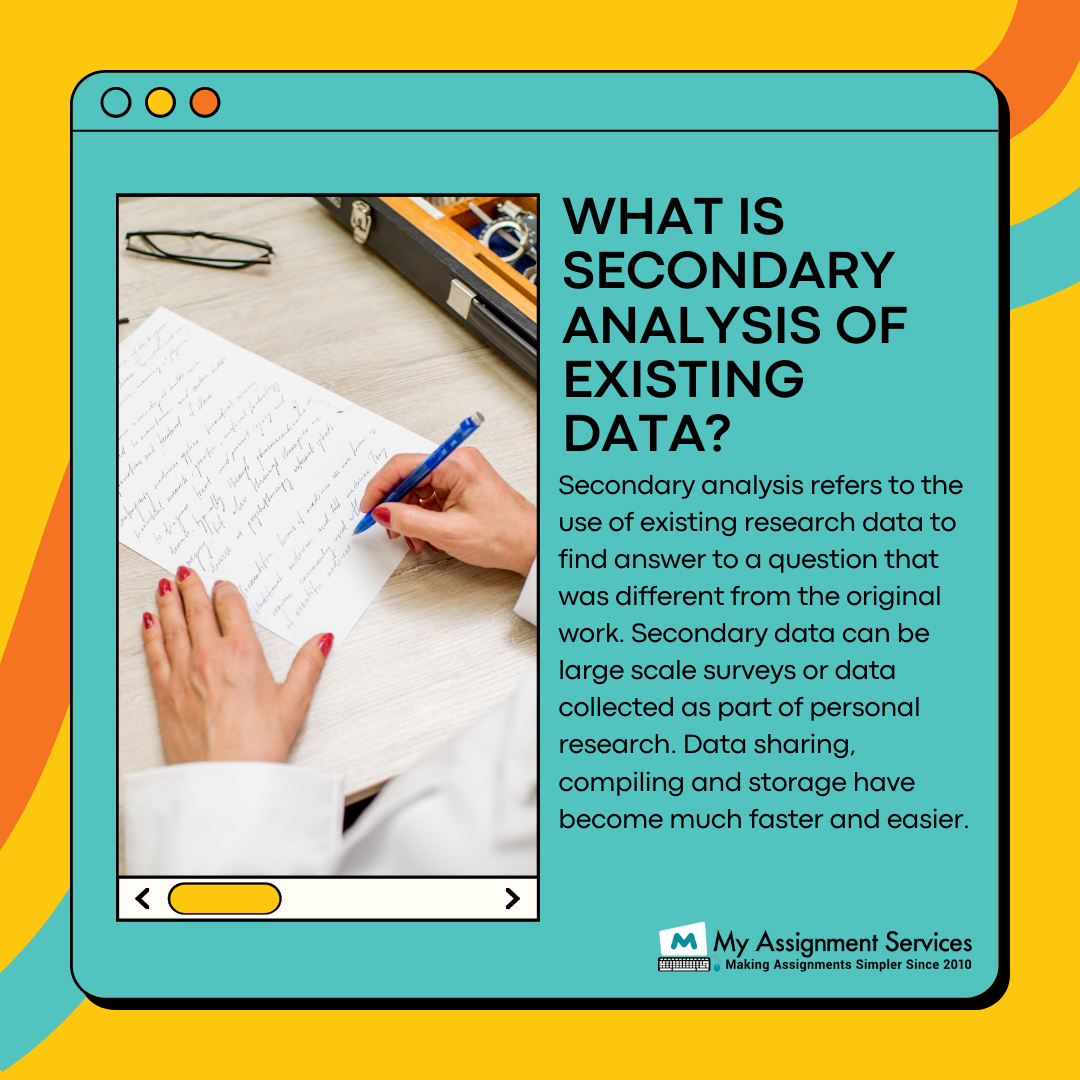
If you are reading this, then you are most likely undertaking secondary research rather than original research for your dissertation. If this person is you, there's good news: secondary research is the most straightforward sort of study!
Secondary research is, in a word, a lot easier. It's so straightforward, in fact, that we are going to describe how to do it in only four steps. Secondary research methods usually avoid the exhausting efforts that primary research entails. A few examples include conducting interviews, selecting and building metrics, and spending months and weeks gathering data.
As with all sorts of data, the two most common categories of secondary research are quantitative and qualitative. As an outcome, secondary research can use both quantitative and qualitative data sets.
Quantitative secondary research is one of the more popular forms, whereas qualitative secondary research is less used. This is not to say that secondary qualitative data from other sources cannot be beneficial in a research project. You'll use secondary data if you want to leverage previously gathered info to do your current research. It's most commonly used when you wish to test information collected through qualitative research using a quantitative methodology.

Secondary research is the most typical approach of conducting an investigation in a systematic manner wherein the researcher solely depends upon the information which has been published earlier. This sort of research method incorporates arrangement, merging, and analyses of various samples of data, and this is to draw significant conclusions from the study.
This research is also known as desk research as it requires synthesising data from the internet, journals, manuals, databases of official sites, and bookstores. Researchers herein evaluate previously documented tendencies in preceding studies and apply this information to the present study's setting.
Secondary research, surprisingly, frequently uses primary research data; that's why some research combines the two types of analysis. In this sense, the researcher begins by identifying and evaluating gaps in existing understanding before moving on to primary research to gather new data for the topic.
Secondary research, as told earlier, entails data gathering from several sources, which is—utilising current or existing research materials instead of developing an entirely new pool of data via primary research methods. Collection of data through the internet, archives, libraries, college, and organisational reports are all general approaches for secondary research.
Official and non-government databases may also contain important research resources, which normally contain verifiable data that can be applied to a number of study situations. In several cases, you will have to pay some bucks for access to such data.
The issue is that such information is not always easily used for a range of reasons. A few of these materials, for example, are classified information, making access to the hard for scholars.
Information gathered through the usage of the internet is referred to as "online data." This strategy has become popular since the internet offers various free and paid information sources that are accessible instantaneously with just one click.
Since this technique offers simple data gathering, the researcher must be cautious to only obtain information from trustworthy sources. All other secondary research data sources are virtually aggregated on the internet.
Access to academic materials is also available through libraries. Go for a library as an information store incorporating a collection of vital data that may be utilised as credible information in a number of research ways.
In most cases, especially in academia, scholars pay attention to several copies of their dissertations and make them open to the public and private libraries. Besides this, libraries gather and keep corporate directories, bulletins, annual reports, and other comparable publications in hard and soft copies, which can be used for research.
Secondary data is also available in educational institutions such as schools, colleges, and colleges and is extremely important in academic research. Because educational institutions perform more research than other industries, this is the case.
It is a lot more simple to get research data from educational institutions as they provide attention to solving problems and expanding the spectrum of knowledge. You can simply ask for research materials from educational institutions for the sake of writing a literature review.

While secondary research saves money and time, it necessitates extra attention on the part of the researcher to make sure the data is correct and dependable. Data for secondary research can be found, among other sources, on the internet, in archives, and in libraries, as previously suggested.
Secondary research is frequently the first stage in a systematic investigation since it provides context for earlier research while also exposing learning gaps that need to be addressed. This method of study is widely used in education.
Nonetheless, it’s worth noting that secondary research depends on the results of a large amount of primary research data to conduct its systematic inquiry. As a result, the quality of data produced by primary research in connection to the research setting will have a stronger impact on the success of your research.
My Assignment Services has top-notch mentors in the UK who are dedicated to assist you with brainstorming ideas, drafting assignments, and other tasks through interactive sessions. No matter the area for which you needdissertation help, our mentors will sort things out in an impeccable manner through live guided sessions. We are available 24x7 to provide you with real-time assistance! Hurry up!Fill the form, and we’ll get back to you in the shortest time.

Hi, my name is Dr. Alice Campbell and I hold a Ph.D. in Literature. I primarily guide students through the dissertation process and provide a deeper understanding of research methodologies and literary analysis. I work as an academic writer for Online Assignment Expert while lending my expertise to assist students in writing dissertation assignments.
1,212,718Orders
4.9/5Rating
5,063Experts
Turnitin Report
$10.00Proofreading and Editing
$9.00Per PageConsultation with Expert
$35.00Per HourLive Session 1-on-1
$40.00Per 30 min.Quality Check
$25.00Total
FreeGet
500 Words Free
on your assignment today
Trending now
The Student Corner
Subscribe to get updates, offers and assignment tips right in your inbox.
Popular Posts
Popular Posts
Request Callback
Doing your Assignment with our resources is simple, take Expert assistance to ensure HD Grades. Here you Go....
Lock in your expert now.
Pay the rest only after you're 100% satisfied.
Why this is a no-brainer:
Loved reading this Blog? Share your valuable thoughts in the comment section.
Add comment